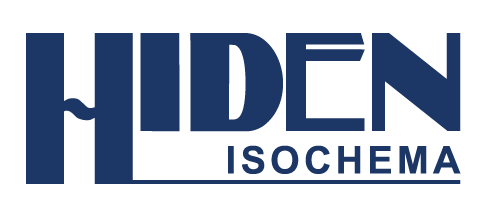High pressure adsorption measurements are important for a wide range of applications, such as methane storage, hydrogen storage, and the separation and purification of a variety of gas and vapor species. In each application, it is essential to properly characterize the adsorption behavior of various materials under feasible conditions.
However, it is not easy to perform measurements at high pressures. In addition, the compatibility of components for use with corrosive species is a major issue. Corrosive species are important for environmental applications.
This article presents the data taken under different experimental conditions by means of the Hiden Isochema XEMIS microbalance. For this experiment, a metal-organic framework (MOF), a zeolite, and a shale were selected. There is a need to characterize small MOF samples for research applications, and also to measure the low gas uptakes by shales. Shales are heterogeneous natural materials and hold practical interest in view of the shale gas boom. However, in order to characterize these materials, high temperatures and pressures are required to imitate geologically-relevant conditions.
Experimental Details
The XEMIS is a symmetrical, high accuracy sorption microbalance, with the sample weight measured and beam position controlled by a proprietary feedback system (Figure 1). The sensitive measuring components are located outside of the chamber, making it possible operate with corrosive species at high pressures. The XEMIS microbalance has a weighing range of 200 mg, a maximum capacity of 5 g, a long term stability of ±5 µg, and a resolution of 0.2 µg. It operates to 770 K and 200 bar; operation is fully automated with temperature, pressure, and weight readings continuously recorded at intervals from 0.1 s. This allows complete analysis of the equilibrium uptake and sorption kinetics.
.jpg)
Figure 1. XEMIS microbalance schematic
SO2 adsorption desorption isotherms on a new MOF, N0TT-300, is shown in Figure 2. These isotherms were measured at five temperatures, each 12.5 K apart and in the range of 298 to 348 K. It can be observed that the isotherms show good reversibility, indicating long term stability of the XEMIS as well as excellent compatibility with corrosive species. The pressure resolution on the x-axis can be seen, with pressure setpoints regulated from 3 mbar upwards.
.jpg)
Figure 2. SO2 adsorption on NOTT-300
For every measurement, the microbalance was loaded with a sample, which was degassed for a few hours at a suitable temperature. The sample’s temperature was controlled while the gas was successively dosed at decreasing pressures for desorption measurements, and increasing pressures for adsorption measurements. A Hiden Isochema XCS gas delivery system was coupled with the XEMIS was used to constantly regulate gas pressure.
.jpg)
Figure 3. CH4 adsorption on alum shale
CH4 adsorption isotherms on alum shale are shown in Figure 3. These isotherms were measured at five temperatures, each 15 K apart and in the range 298 to 358 K. Samples were analysed at pressures up to 100bar, and high quality data were obtained given the µmol g-1 scale on the y-axis. This shows the ability of the XEMIS microbalance to carry out measurements with samples showing very low uptakes. The trend of the individual isotherms and the spacing between them is as anticipated for physisorption, with higher uptakes observed at lower temperatures.
.jpg)
Figure 4. H2 adsorption on Na-X zeolite at 77 K
Figure 4 illustrates H2 adsorption-desorption isotherms at 77 K, measured for a 50 mg sample of Na-X zeolite at 150 bar. The data demonstrates excellent reversibility, as anticipated for physisorption, and the surplus adsorption reaches a peak of approximately 20 bar prior to decreasing as the pressure further increases. This behavior is normal for high pressure adsorption.
Conclusion
This article shows how the Hiden Isochema XEMIS microbalance was effectively used to measure both the desorption and adsorption of CH4 , H2 and SO2 gases. The microbalance can determine kinetic data and equilibrium uptake simultaneously by means of Hiden Isochema's IGA method. This study shows exceptional long term stability of the XEMIS microbalance, which makes it perfect for determining low uptakes, or studying small sample sizes. Here, the high quality data shows sorption measurements in severe conditions such as corrosive atmospheres, at elevated temperatures and high pressures.

This information has been sourced, reviewed and adapted from materials provided by Hiden Isochema.
For more information on this source, please visit Hiden Isochema.